This blog is where I reflect on creative processes, creative happenings, creative experiences and creative artefacts.
First Semester - COMPLETED!
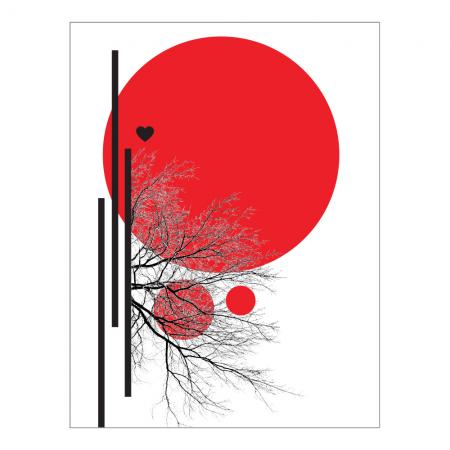 Detail from Greyscale Geometric with Tree by Saskia van Kampen
Detail from Greyscale Geometric with Tree by Saskia van Kampen
The final project for my York University Masters of Design 1 Studio class with Paul Sych is an exhaustive exploration into design principles and composition.
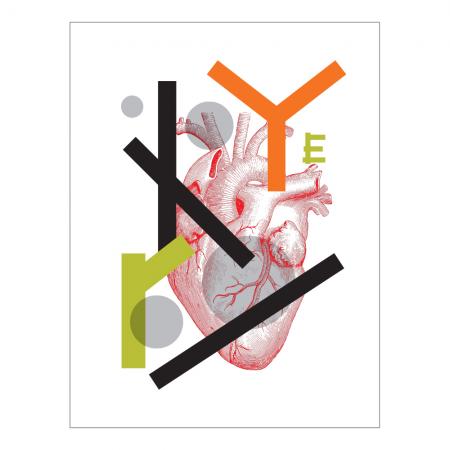 Detail from Full Colour Exploration of all Elemnets by Saskia van Kampen
Detail from Full Colour Exploration of all Elemnets by Saskia van Kampen
As a teacher of first year under-graduate design students I have become cognizant of how methods of learning are changing and how we as teachers need to address the shifting needs of our students. Over the past six years, I have observed that students, faced with constant technological advancement, experience difficulty distilling
information within a formal classroom setting. In order to connect with students, teachers must work in this new technologically advanced arena.
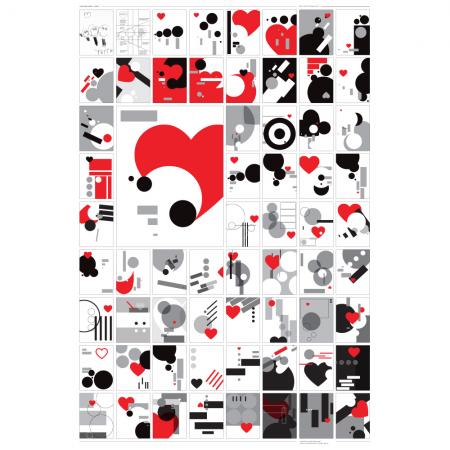
Greyscale geometric by Saskia van Kampen
Teaching methods become an essential element to a comprehensive teaching process. This has had a great influence on the focus for my thesis and is the starting point for my MDes 1 Studio project. The result of which, is a series of 8 posters – each containing 62 “thumbnail” explorations – totaling 496 compositions that explore Gestalt Principles of design.
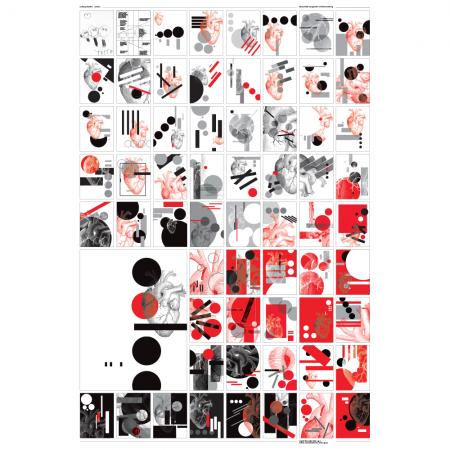 Greyscale geometric with Heart Rendering by Saskia van Kampen
Greyscale geometric with Heart Rendering by Saskia van Kampen
The Gestalt Principles are the scaffolding of design and help frame an understanding of visual perception. Gestalt psychology was adapted by the Bauhaus to formulate the principles of design and colour theory and to explain how we perceive and read visual information. The concepts that the Gestalt principles proffer, such as visual grouping and closure, seem elementary. However, they form the infrastructure of composition – harnessing these theories can aid the student exponentially.
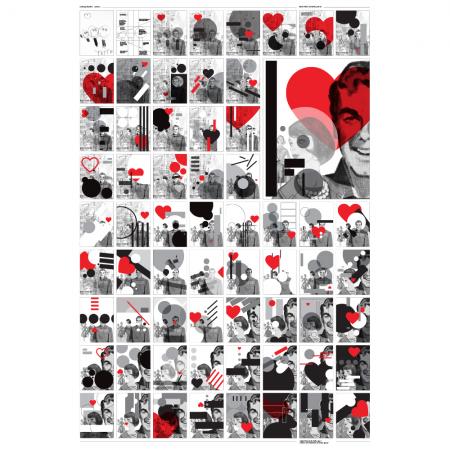 Greyscale with Family by Saskia van Kampen
Greyscale with Family by Saskia van Kampen
Janie Rhyne, in her book The Gestalt Art Experience, states that “healthy children are naturally Gestaltists – they live in the present; give full attention to what they are doing; do what they want to do; trust their own experiential data; and until they are trained out of it, they know what they know with direct simplicity and accuracy.” I began my process work by collecting children’s art and looking at them in a structural way, ignoring content. The drawing I chose to analyze is by Betty, age 2. Her piece was minimal and utilized many of the Gestalt Principles.
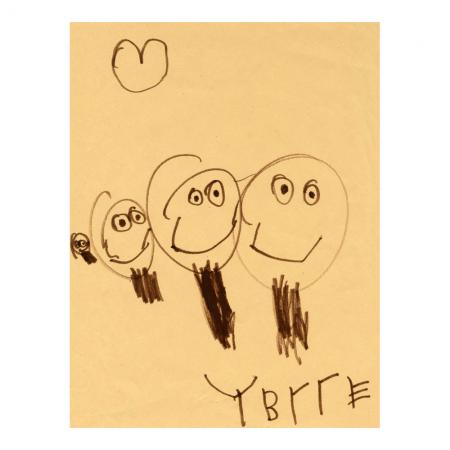
Original Work by Betty age 2
Since Betty is a child and has had little life experience her work is uninhibited and created primarily through intuition. As we get older our intuition becomes increasingly biased by past experiences, past successes, fear of failure and “top of mind” information. Frans Johansson, author of The Medici Effect, writes about “associative barriers” which are detrimental to creativity. Associative barriers are built up throughout our lives and we subconsciously call them into play every time we make decisions, hindering free thought and innovation. In order to help students overcome these barriers I have them sketch 50 – 100 thumbnails before committing to a layout.
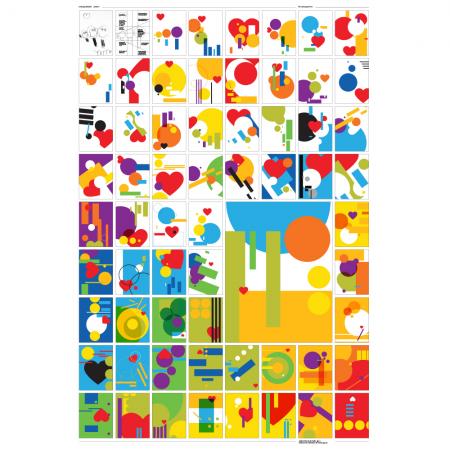 Full Colour Geometric by Saskia van Kampen
Full Colour Geometric by Saskia van Kampen
Using this exercise, I have taken the simplified elements from Betty’s work and embarked on an exhaustive exploration of applied design principles through a series of thumbnails.
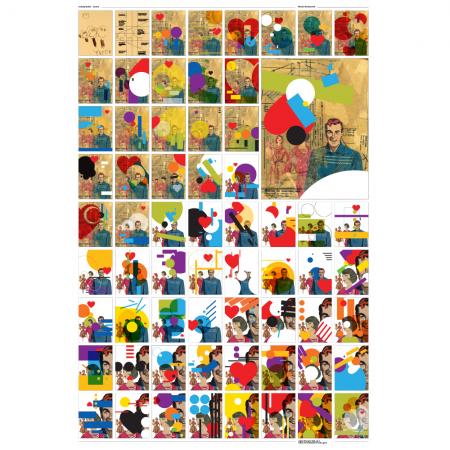 Full Colour with Family by Saskia van Kampen
Full Colour with Family by Saskia van Kampen
“When we are adults who have been conditioned by our culture, stretching the vision of our mind’s-eye often means that we must free ourselves from habitually narrow vision.… limiting ourselves to one perspective is likely to distort the whole image” explains Janie Rhyne in The Gestalt Art Experience. Having been working in the corporate world for 15 years this project has been very challenging for me and I have experienced just how prohibitive associative barriers are.
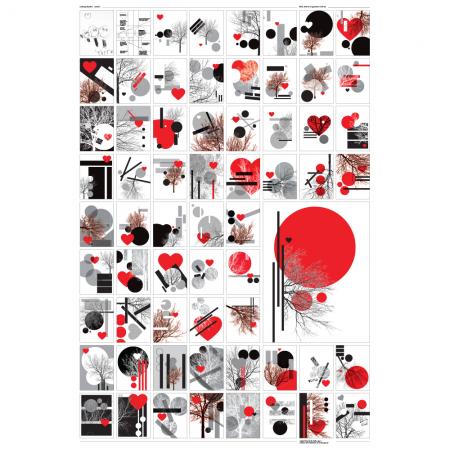 Greyscale with Tree by Saskia van Kampen
Greyscale with Tree by Saskia van Kampen
I owe Paul Sych a great big “Thank You” for giving me the sledgehammer of confidence I needed to start breaking down those walls. My MDes 1 Studio project has allowed me to practice an iterative design process through which I have discovered new ways of approaching my personal practice. This project has rekindled my excitement and love for design.
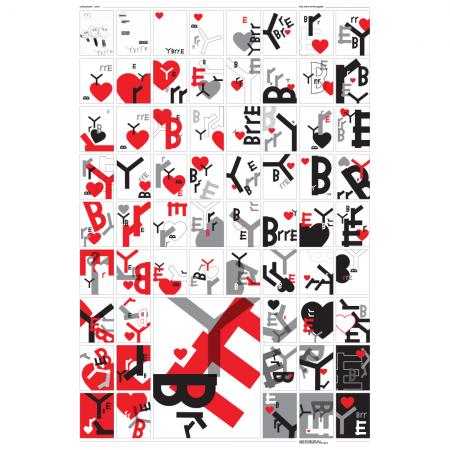
Typographic Exploration by Saskia van Kampen
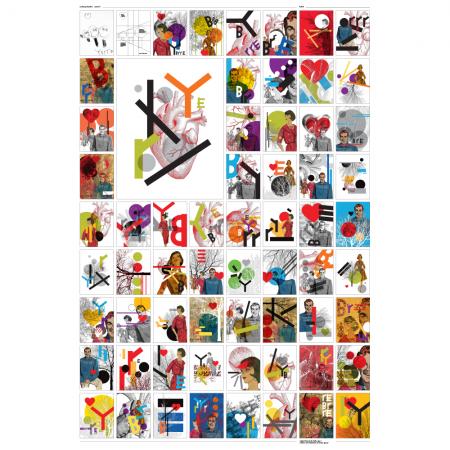 Full Colour with exploration of all elements by Saskia van Kampen
Full Colour with exploration of all elements by Saskia van Kampen
